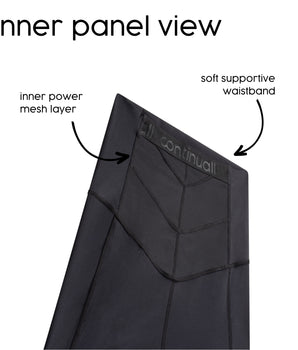Pregnancy and the postpartum period are incredibly transformative times in a mother's life. The body goes through a multitude of changes impacting pretty much every system in the body and for many, these changes can cause some serious aches and pains in your lower back and pelvis.
In this blog post, we're going to dive into what lower back and pelvic girdle pain (LBPGP) is all about, how common it is, what it can mean for you, as well as some tips to help you handle it during these major phases of your life.
What is Lower Back and Pelvic Girdle Pain (LBPGP)?
Lower back and pelvic girdle pain (LBPGP) refer to discomfort or pain experienced in the lower back, pelvis, and hips during pregnancy and the postpartum period. It can go from just a bit annoying to downright painfully debilitating, and it unfortunately can greatly impact a mother's daily life and how they feel overall.
It not specifically a diagnosis, but rather an umbrella term that many, MANY conditions can fall under including:
* Pubic symphysis Dysfunction
* Sacroiliac joint Dysfunction
* Bursitis
* Osteitis Pubis
* Lumbar disc bulge
* Sciatica
This is why it is essential to seek the help of your health care provider to distinguish which condition is causing your lower back and/or pelvic girdle pain.
How Common is LBPGP?
LBPGP is a common issue experienced by a lot of people during pregnancy. According to a study published in the journal Spine, it affects approximately 50-70% of pregnant women (Wu et al., 2004). Although the prevalence tends to decrease after childbirth, it can still persist in the postpartum period, affecting around 25-30% of women (Elden et al., 2016).
Implications of LBPGP
LBPGP can really throw a spanner into the lives of pregnant women and new mums. Here's what it can mean...
Quality of Life Takes a Hit: When LBPGP is at its worst, it can put the brakes on a mum's ability to handle her daily tasks, which can make life less enjoyable.
Sleep Goes Out the Window: Pain doesn't play nice with sleep. It can mess with your Zzzs, leaving you tired and less prepared to handle the physical demands of being a mum.
Emotions Get a Workout: Dealing with chronic pain isn't just physical – it's an emotional rollercoaster. Stress, anxiety, and even depression can come along for the ride.
Mobility Takes a Hit: LBPGP can be like a roadblock to staying active during pregnancy and getting back into the groove postpartum. It can make moving around a real challenge.
Tips on Managing LBPGP
Prenatal Care: Early intervention is key! Discuss any pain or discomfort with your healthcare provider, who can provide guidance and referrals to specialists if needed.
Physical Therapy: Consult with a physical therapist specialising in women's health. They can provide exercises and techniques to alleviate pain and improve pelvic stability.
Proper Body Mechanics: Pay attention to your posture and body mechanics. Use proper techniques when lifting objects or getting in and out of bed to reduce strain on your lower back and pelvis.
Pregnancy Support garments: Maternity support belts and bands and other garments can provide additional support to the lower back and pelvis, reducing discomfort. Our go fourth pregnancy tight provides gentle support to the lower back and pelvis and can be worn comfortably all day!
Strengthening Exercises: Engage in exercises that strengthen the core and pelvic floor muscles, such as Kegels and pelvic tilts. These exercises can help stabilise the pelvis.
Low-Impact Exercises: Consider low-impact activities like swimming or prenatal yoga, which can relieve pain and improve mobility.
Heat and Cold Therapy: Applying heat or cold packs to the affected area can provide temporary relief from pain and inflammation.
Postpartum Recovery Exercises: After childbirth, consult with a physical therapist to develop a postpartum exercise plan that focuses on restoring strength and stability that's tailored to you.
Nutrition and Hydration: Maintain a balanced diet and stay hydrated to support overall health and healing.
Medication and Medical Intervention: In severe cases, medication or medical procedures may be necessary. Always consult with your healthcare provider before considering these options though!
Dealing with lower back and pelvic girdle pain is something lots of pregnant women and new mums run into. It can be a bit of a struggle, but it's super important to tackle it head-on to make your pregnancy and postpartum journey as smooth as possible. So, by checking out tips that have real evidence backing them, getting some expert advice, and staying on top of your well-being, you'll be on your way to managing LBPGP and fully embracing the awesome moments of motherhood.
- Blog written by Dr Aisling Bolton (co-founder @ continuall)
Registered Osteopath
Bachelor of Science (Osteopathy)/Master of Health Science (Osteopathy)
References:
Wu, W. H., Meijer, O. G., Uegaki, K., Mens, J. M. A., van Dieën, J. H., Wuisman, P. I. J. M., & Östgaard, H. C. S. (2004). Pregnancy-related pelvic girdle pain (PPP), I: Terminology, clinical presentation, and prevalence. European Spine Journal, 13(7), 575-589.
Elden, H., Gutke, A., Kjellby-Wendt, G., & Fagevik-Olsen, M. (2016). Predictors and consequences of long-term pregnancy-related pelvic girdle pain: a longitudinal follow-up study. BMC Musculoskeletal Disorders, 17(1), 276.



















